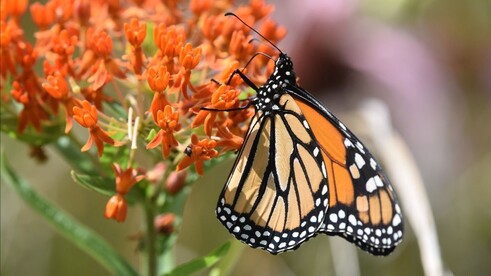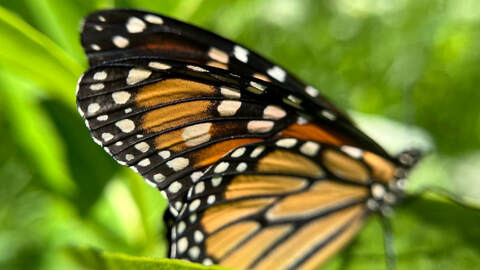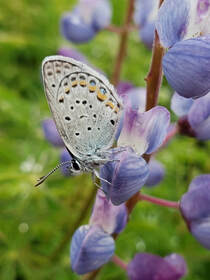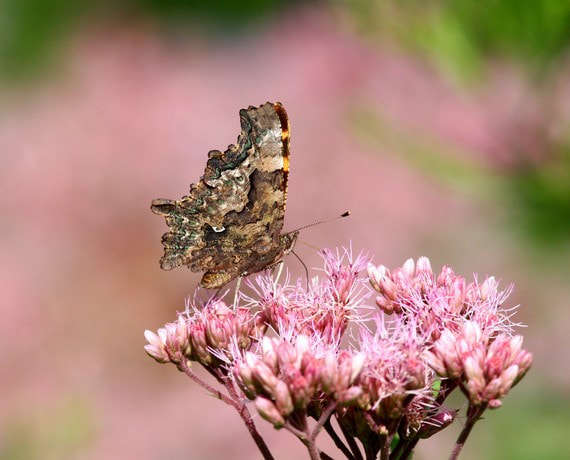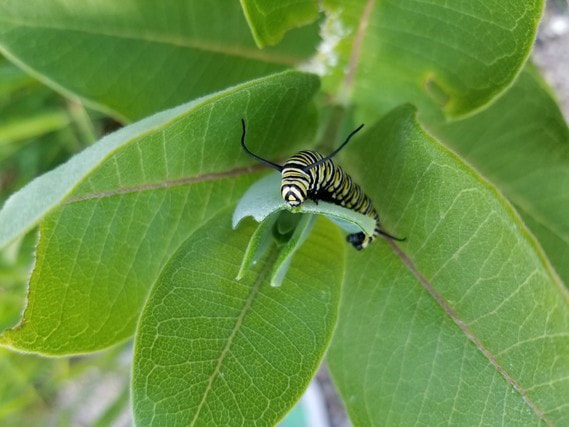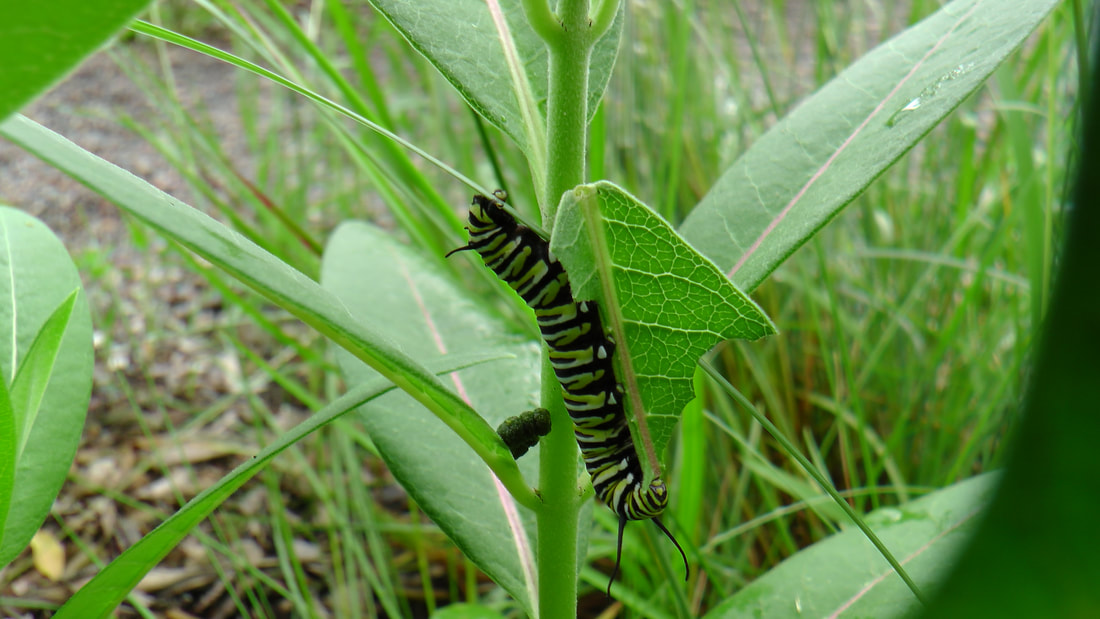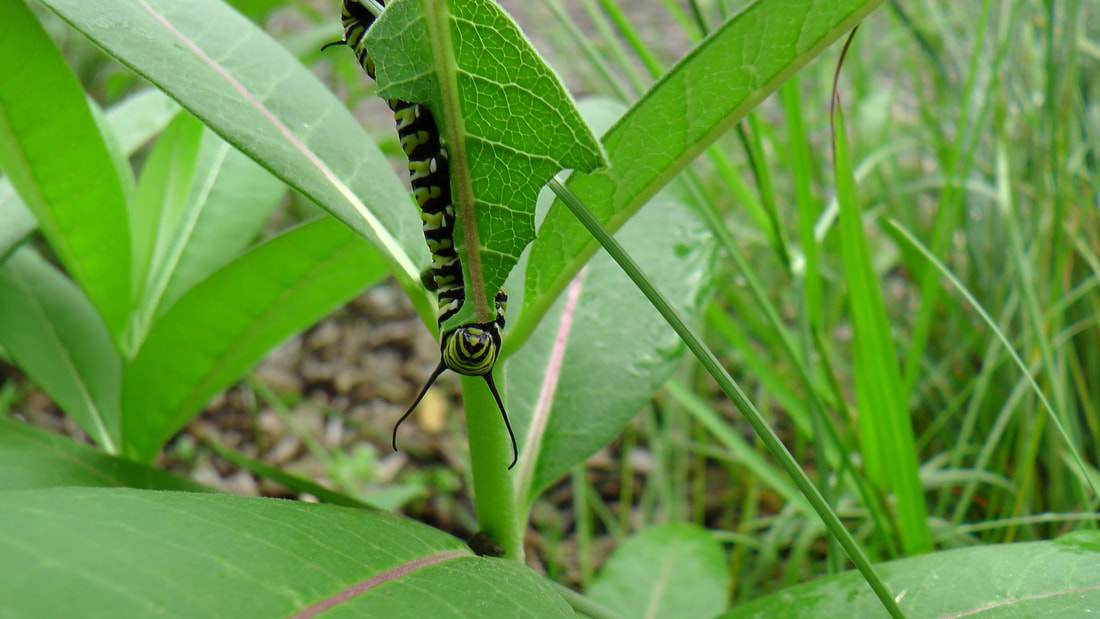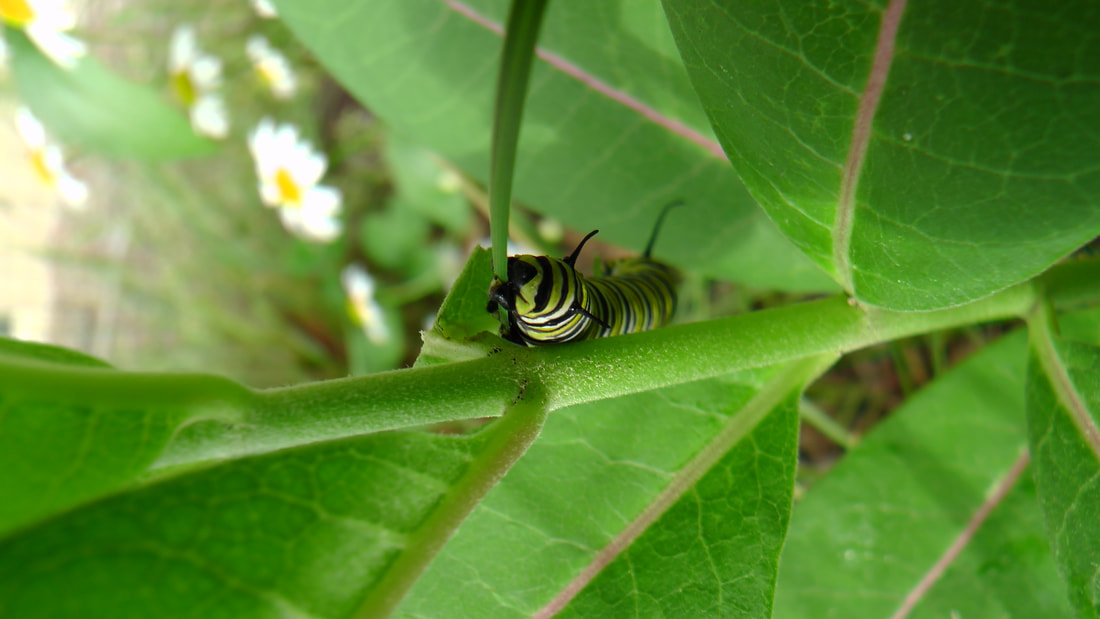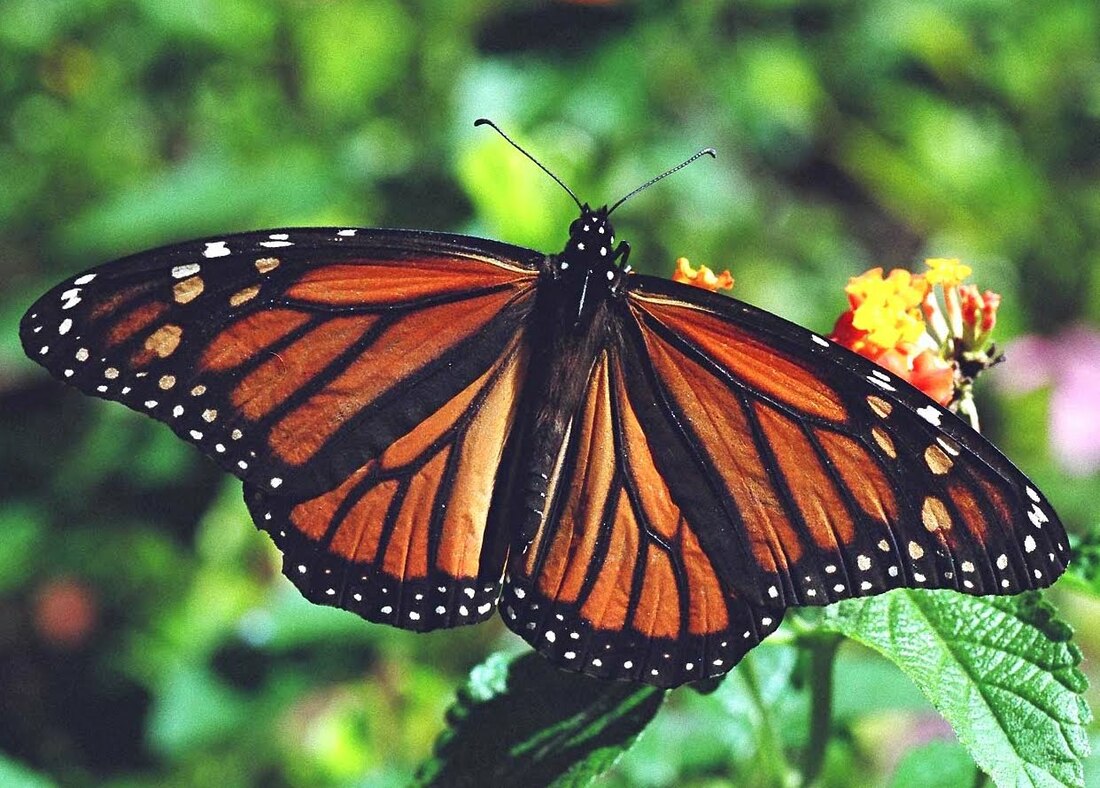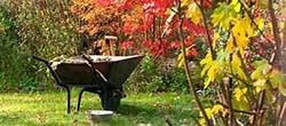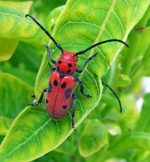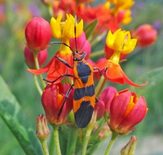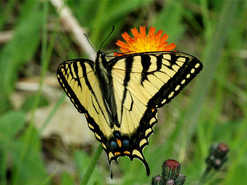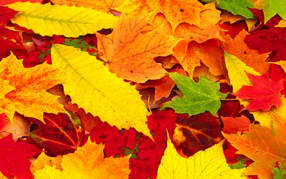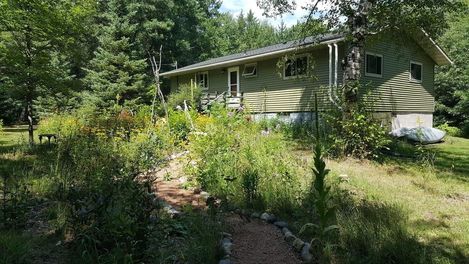Pollinator Tour &
Open House Events
Come visit our Bee Lawn!
The Oneida County Land & Water Conservation Department has
partnered with the Healing Nature Center to create a pollinator-friendly
habitat in a public place for you to enjoy.
A Bee Lawn is a versatile, durable pollinator habitat that
allows for everyday walking and recreational use, like ball games
and other outdoor activities.
See more details at https://beelab.umn.edu/bee-lawn.
This project was also sponsored by a $250 grant from
Wisconsin Public Service.
The site is located at the Healing Nature Center at 7126 Military Road,
Three Lakes, WI (Healingnaturecenter.org) in close proximity
to other pollinator habitat beds. To experience the Bee Lawn, you can come to either of the public events happening in June (click on the buttons below) or make an appointment by emailing: [email protected].
The Oneida County Land & Water Conservation Department has
partnered with the Healing Nature Center to create a pollinator-friendly
habitat in a public place for you to enjoy.
A Bee Lawn is a versatile, durable pollinator habitat that
allows for everyday walking and recreational use, like ball games
and other outdoor activities.
See more details at https://beelab.umn.edu/bee-lawn.
This project was also sponsored by a $250 grant from
Wisconsin Public Service.
The site is located at the Healing Nature Center at 7126 Military Road,
Three Lakes, WI (Healingnaturecenter.org) in close proximity
to other pollinator habitat beds. To experience the Bee Lawn, you can come to either of the public events happening in June (click on the buttons below) or make an appointment by emailing: [email protected].
Changes in WMC Leadership
Changes in the Wisconsin Monarch Collaborative (WMC) leadership.
In June, long-time WMC Coordinator Brenna Jones stepped down and has moved on to greener pastures. Brenna was involved in WMC from the start, participating in the 2017 Wisconsin Monarch Summit as a graduate student at UW - Madison, and was hired as the WMC Coordinator shortly thereafter. We will miss her expertise and enthusiasm for monarch conservation, and wish her the best in whatever the future holds!
The WMC Coordination Team is working on finding a long-term solution to the coordinator position and will have more updates later this fall. In the mean time, Communications Specialist Anna Brose will be filling in a few hours a week on coordination duties until the end of October. If you have questions or concerns for the coordinator, please reach out to Anna, Cait Williamson (Natural Resources Foundation), or Owen Boyle (WDNR)
In June, long-time WMC Coordinator Brenna Jones stepped down and has moved on to greener pastures. Brenna was involved in WMC from the start, participating in the 2017 Wisconsin Monarch Summit as a graduate student at UW - Madison, and was hired as the WMC Coordinator shortly thereafter. We will miss her expertise and enthusiasm for monarch conservation, and wish her the best in whatever the future holds!
The WMC Coordination Team is working on finding a long-term solution to the coordinator position and will have more updates later this fall. In the mean time, Communications Specialist Anna Brose will be filling in a few hours a week on coordination duties until the end of October. If you have questions or concerns for the coordinator, please reach out to Anna, Cait Williamson (Natural Resources Foundation), or Owen Boyle (WDNR)
New one-page handouts from WMC
The Communications Working Group recently finished production on not one, but TWO new one-page educational handouts: "How to plant monarch habitat" and "What's the matter with monarchs? (And why do they matter?)"! Please share these widely. The WMC Toolkit has web- and printer-friendly versions, as well as thumbnail images for social media and a version set up for professional printing if you want to get fancy and have some printed for your outreach events!
Monarchs Placed on the IUCN Red List
In July, the International Union for Conservation of Nature (IUCN) added the migratory populations of monarchs to their Red List, and labeled them as "endangered". A few important notes about this distinction:
- Being added to the IUCN Red List is not the same as being listed as "endangered" under the U.S. Endangered Species Act.
- The IUCN decision does not impose any legal changes to how monarchs are managed in the U.S.
- Being added to the IUCN Red List is meant to bring greater attention to imperiled species and will hopefully result in more proactive monarch conservation.
- Monarchs will be reassessed for listing as an Endangered Species under the U.S. Endangered Species Act in 2024.
____________________________________
Celebrate And Help Pollinators
Looking for some Early Blooming Plants?
If you are interested in some early blooming plants for our pollinators,
check out the following link.
https://wisconsinpollinators.com/Garden/G_WoodlandEphemeralsPlan.aspx
check out the following link.
https://wisconsinpollinators.com/Garden/G_WoodlandEphemeralsPlan.aspx
Come Get Lost in the Courthouse Pollinator Garden
This video was taken in August, 2022
Give Butterflies,
|
In celebration of Pollinator Week, June 20-26, the Wisconsin Department of Natural Resources (DNR) encourages Wisconsinites to protect native pollinators by creating pollinator-friendly habitat, volunteering to monitor pollinator species and learning more about the bees, butterflies and birds buzzing in their own backyards.
A pollinator is any animal that visits flowering plants and transfers pollen from flower to flower, aiding plant reproduction. In Wisconsin, native pollinators include bees (Wisconsin has 400 species of them, including bumble bee species), butterflies, moths, flower flies, beetles, wasps and hummingbirds.
Several species of bumble bees and butterflies are in decline in Wisconsin, with potentially widespread implications.
"Our native pollinators are incredibly important to maintaining Wisconsin's native ecosystems, many fruit crops and backyard gardens, but they need our help," said Jay Watson, DNR Insect Ecologist. "Creating healthy habitat for pollinators and getting trained to help identify and locate bumble bees, Karner blue butterflies, and monarch eggs and caterpillars are great ways to help."
In Wisconsin, many of these flowering plants and the insects that pollinate them feed other wildlife and support healthy ecosystems that clean the air and stabilize soils.
Pollinators are crucial for many of Wisconsin’s agricultural crops, too. Without pollinators, Wisconsin cranberry growers would lose three-quarters of their crop, apple growers would lose 80%, and cherry growers would lose 60%. Concern over declines in pollinators led the Wisconsin Department of Agriculture, Trade and Consumer Protection to develop the Wisconsin Pollinator Protection Plan in 2015.
Feed Pollinators And Help Find ThemVegetable gardens, fruit trees and shrubs, flower gardens and even your lawn can all provide habitat for both honeybees and native pollinating insects.
It’s not difficult to create an environment desirable to pollinators. A good pollinator habitat will include a diversity of native plants, leaf litter or unmanicured green spaces, and minimal to no pesticide use.
"Even individuals with only a small yard or an apartment balcony can grow native flowers that provide food for pollinators," Watson said.
The DNR's Saving Pollinators webpage has lists of plants that are good for pollinators and other resources.
There are several pollinator projects in Wisconsin that people can join to help provide high-quality data to be used for conservation and management. Volunteering with these projects can be done by anyone, wherever they are in the state. Volunteer projects include:
A pollinator is any animal that visits flowering plants and transfers pollen from flower to flower, aiding plant reproduction. In Wisconsin, native pollinators include bees (Wisconsin has 400 species of them, including bumble bee species), butterflies, moths, flower flies, beetles, wasps and hummingbirds.
Several species of bumble bees and butterflies are in decline in Wisconsin, with potentially widespread implications.
"Our native pollinators are incredibly important to maintaining Wisconsin's native ecosystems, many fruit crops and backyard gardens, but they need our help," said Jay Watson, DNR Insect Ecologist. "Creating healthy habitat for pollinators and getting trained to help identify and locate bumble bees, Karner blue butterflies, and monarch eggs and caterpillars are great ways to help."
In Wisconsin, many of these flowering plants and the insects that pollinate them feed other wildlife and support healthy ecosystems that clean the air and stabilize soils.
Pollinators are crucial for many of Wisconsin’s agricultural crops, too. Without pollinators, Wisconsin cranberry growers would lose three-quarters of their crop, apple growers would lose 80%, and cherry growers would lose 60%. Concern over declines in pollinators led the Wisconsin Department of Agriculture, Trade and Consumer Protection to develop the Wisconsin Pollinator Protection Plan in 2015.
Feed Pollinators And Help Find ThemVegetable gardens, fruit trees and shrubs, flower gardens and even your lawn can all provide habitat for both honeybees and native pollinating insects.
It’s not difficult to create an environment desirable to pollinators. A good pollinator habitat will include a diversity of native plants, leaf litter or unmanicured green spaces, and minimal to no pesticide use.
"Even individuals with only a small yard or an apartment balcony can grow native flowers that provide food for pollinators," Watson said.
The DNR's Saving Pollinators webpage has lists of plants that are good for pollinators and other resources.
There are several pollinator projects in Wisconsin that people can join to help provide high-quality data to be used for conservation and management. Volunteering with these projects can be done by anyone, wherever they are in the state. Volunteer projects include:
- Wisconsin Bumble Bee Brigade, a new DNR effort to train the public to help identify and photograph bumble bees, including the rusty patched bumble bee. Wisconsin is one of the strongholds for this federally endangered species. Find more information on the Bumble Bee Brigade's website.
- Wisconsin Karner Volunteer Monitoring Program, in which trained volunteers monitor for wild lupine, the native plant Karner blue butterflies feed on. People can also photograph and submit information about Karner blue butterflies they see while outdoors. Learn how to get involved on the Karner Volunteer Monitoring Program website.
- The Monarch Larva Monitoring Project needs volunteers statewide to search patches of milkweed for monarch eggs and caterpillars. Learn how to get started on the Monarch Larva Monitoring Project's website.
- - - - - - - - - - - - - -
6-Session, On-line Webinar Series
Launches This Month
All sessions have been recorded and posted on the Bumble Bee Short Course webpage: http://go.osu.edu/bumbles
Aired: March 18: Bumble Bee Biology, Part 1
Jamie Strange: The Ohio State University
Aired: March 25: Bumble Bee Biology, Part 2 -- Queens and Endangered Bumbles
Jamie Strange: The Ohio State University
Tamara Smith: U.S. Fish and Wildlife service
Aired: April 1: Bumble Bee Identification
Eastern North America or Western North America
Times are EASTERN
(1) Identification of Bumble Bees from Eastern North America
Karen Goodell: The Ohio State University
(2) Identification of Bumble Bees from Western North America
Lincoln Best: Oregon State University
Aired: April 8: Bumble Bee Botany
Randy Mitchell: The University of Akron
Aired: April 15: Threats and Opportunities for Conservation
Hollis Woodard: University of California, Riverside
Aired: April 22: You Can Make a Difference for Bumble Bees: Programs to Document Bumble Bees inYards, Parks, Gardens, and Natural Areas AND What Plants They Use - Sam Droege: Native Bee Inventory and Monitoring Lab, USGS; Jenan El-Hifnawi: USGS Bumble Bee Survey Coordinator
FOR MORE: Visit the OSU Bee Lab Website
Aired: March 18: Bumble Bee Biology, Part 1
Jamie Strange: The Ohio State University
Aired: March 25: Bumble Bee Biology, Part 2 -- Queens and Endangered Bumbles
Jamie Strange: The Ohio State University
Tamara Smith: U.S. Fish and Wildlife service
Aired: April 1: Bumble Bee Identification
Eastern North America or Western North America
Times are EASTERN
(1) Identification of Bumble Bees from Eastern North America
Karen Goodell: The Ohio State University
(2) Identification of Bumble Bees from Western North America
Lincoln Best: Oregon State University
Aired: April 8: Bumble Bee Botany
Randy Mitchell: The University of Akron
Aired: April 15: Threats and Opportunities for Conservation
Hollis Woodard: University of California, Riverside
Aired: April 22: You Can Make a Difference for Bumble Bees: Programs to Document Bumble Bees inYards, Parks, Gardens, and Natural Areas AND What Plants They Use - Sam Droege: Native Bee Inventory and Monitoring Lab, USGS; Jenan El-Hifnawi: USGS Bumble Bee Survey Coordinator
FOR MORE: Visit the OSU Bee Lab Website
‘WASPS: Their Biology, Diversity, and Role
as Beneficial Insects and Pollinators
of Native Plants’
Free Webinar by Heather Holm
Wednesday, October 20, 2021 - 6 p.m. CDT
Heather Holm has spoken at previous Oneida County pollinator events. At this FREE webinar, she will be sharing from her new book, “WASPS,” which features approximately 150 species of flower-visiting wasps that occur in eastern North America, and the specific native plants and habitat each species depends upon.
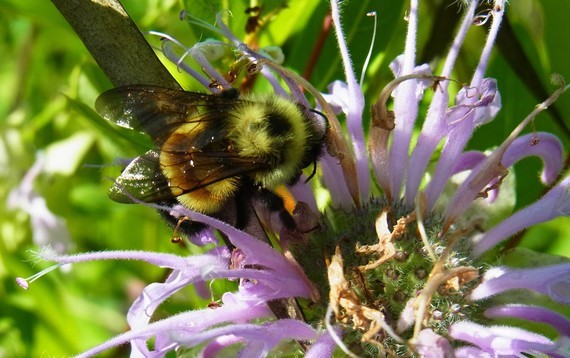
A rusty patched bumble bee on bee balm. The state is a stronghold for this federally listed pollinator species. Click on the image to learn more about its amazing life cycle and an exciting discovery in Wisconsin in 2020 in "A Small Nest Creates Big Buzz" in the Summer Wisconsin Natural Resources magazine. / Photo Credit: Jay Watson
June 20-26 is celebrated nationally as Pollinator Week, and it's a good time to learn more about and help these wondrous workers. Pollinators visit flowering plants and transfer pollen from flower to flower, allowing the plants to reproduce. Wisconsin’s native pollinators include bees, butterflies, moths, flower flies, beetles, wasps and ruby-throated hummingbirds. Pollinators are critical to Wisconsin ecosystems and crops including cranberries, cherries and peppers, yet many pollinator populations are in decline in Wisconsin and elsewhere in the U.S. and globally.
Plant Native Species
To Attract & Aid Pollinators
Planting native species will attract and aid pollinators such as bumble bees, monarchs and other rare and common pollinators. There are many great resources to help you plant native plants specific to Wisconsin.
- Visit the DNR's Saving Wisconsin's Native Pollinators webpages for tips on how to create homes and habitats for pollinators, plus much more.
- Plant list, bee life cycle and other tips from Wisconsin Natural Resources magazine.
Make Your Habitat Count: Add To Wisconsin's Tally
Once you've planted milkweed and other native plants benefitting pollinators, help make that habitat count.
Enter it into the HabiTally application, now available for smart phones using Android and iOS operating systems. Download it from Google Play or the Apple App store.
The Wisconsin Monarch Collaborative, of which DNR is a partner, encourages people to add their habitat to HabiTally, so it counts towards the 20-year goal of 120 million new stems of milkweed in a mix of wildflowers.
That goal is Wisconsin's contribution to restoring Midwestern breeding habitat for the eastern population of monarch butterflies that overwinters in Mexico.
Enter it into the HabiTally application, now available for smart phones using Android and iOS operating systems. Download it from Google Play or the Apple App store.
The Wisconsin Monarch Collaborative, of which DNR is a partner, encourages people to add their habitat to HabiTally, so it counts towards the 20-year goal of 120 million new stems of milkweed in a mix of wildflowers.
That goal is Wisconsin's contribution to restoring Midwestern breeding habitat for the eastern population of monarch butterflies that overwinters in Mexico.
Solar Panels Go Well With
Tomatoes, Peppers and Pollinators
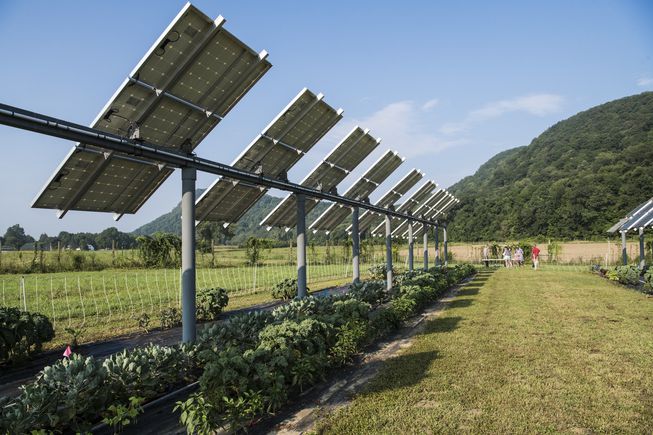
Agrivoltaics, or the pairing of photovoltaic solar panels with agriculture, can help some crops thrive in hot, arid climates. (Photo: U.S. National Renewable Energy Laboratory [CC BY-NC-ND 2.0]/Flickr)
Monarchs in the Rough
The monarch butterfly is a North American icon, but the butterfly’s population has declined by more than 90 percent over the last two decades. To combat this decline and the decline of other key pollinators, Audubon International and Environmental Defense Fund have teamed up to create Monarchs in the Rough, a program that partners with golf courses to restore pollinator habitat in out-of-play areas.
Welcome the first Courthouse
garden caterpillar.
Say Hello to the FIRST Courthouse Monarch Butterfly Caterpillar discovered on June 28, 2019.
Monarchs cannot survive without milkweed; their caterpillars only eat milkweed plants (Asclepias spp.) and monarch butterflies need milkweed to lay their eggs.
Visit us at the Courthouse Garden and say hello to our newest resident!
------ All About Birds ------
|
READ THE STORY
|
The Milwaukee Bucks Have The Most
Bird-Friendly Stadium In The NBA In June of 2018, the NBA’s Milwaukee Bucks opened up a new home stadium, and the team immediately made sports history—with the first-ever certified bird-friendly professional sports arena. |
What to Plant for
|
Why Insect Populations are Plummeting...and Why it Matters
Where are they? How do they show up in spring or summer? Many butterflies pass through a few generations during the warm months, but the “fall brood” doesn’t simply die off. Migration is rare in butterflies. Here are other ways butterflies overwinter, with examples of species commonly seen in the eastern U.S.
Whether they overwinter as a chrysalis, larvae, egg or adult, physiological changes occur that enable butterflies to survive the cold. The blood becomes enriched/thickened with sugars or alcohols, which lowers the freezing point; water content in the body decreases; and cellular water is bound to proteins to minimize crystallization.
Here are strategies uses by over-wintering butterflies:
Make a chrysalis: The last generation of the year remains in the chrysalis in a dormant state for the winter. You can help ensure these beauties survive by leaving your perennials standing through the winter and by raking some leaves into your flower beds. This also creates good insulation and mulch! Crawl into a seed pod. Larvae that mature in fall crawl into seedpods to hibernate for the winter. In spring, they pupate and transform into butterflies. Curl up in a leaf. Groups of butterfly larvae crawl under a leaf and curl it around themselves to make a shelter. To get the leaf to curl, they wrap a silk thread around it, and the thread shrinks as it dries, pulling the leaf over. Chill out as an egg. Females lay their eggs the eggs remain dormant through the winter and hatch in spring.
Now that you know that butterflies and other pollinators need plants and brush cover to complete their life cycles think about how your garden can help them overwinter. When you are cleaning up your garden in late fall, preparing for the winter, use caution! When you trim branches and tidy up, set the branches and leaves aside in case there are caterpillars or chrysalides hiding on them. Rake leaves into garden beds to provide cover for overwintering butterflies. Leave faded plants until the weather warms in spring.
In the spring, after they have had time to emerge, you can compost or otherwise dispose of the material without harming butterflies.
Whether they overwinter as a chrysalis, larvae, egg or adult, physiological changes occur that enable butterflies to survive the cold. The blood becomes enriched/thickened with sugars or alcohols, which lowers the freezing point; water content in the body decreases; and cellular water is bound to proteins to minimize crystallization.
Here are strategies uses by over-wintering butterflies:
Make a chrysalis: The last generation of the year remains in the chrysalis in a dormant state for the winter. You can help ensure these beauties survive by leaving your perennials standing through the winter and by raking some leaves into your flower beds. This also creates good insulation and mulch! Crawl into a seed pod. Larvae that mature in fall crawl into seedpods to hibernate for the winter. In spring, they pupate and transform into butterflies. Curl up in a leaf. Groups of butterfly larvae crawl under a leaf and curl it around themselves to make a shelter. To get the leaf to curl, they wrap a silk thread around it, and the thread shrinks as it dries, pulling the leaf over. Chill out as an egg. Females lay their eggs the eggs remain dormant through the winter and hatch in spring.
Now that you know that butterflies and other pollinators need plants and brush cover to complete their life cycles think about how your garden can help them overwinter. When you are cleaning up your garden in late fall, preparing for the winter, use caution! When you trim branches and tidy up, set the branches and leaves aside in case there are caterpillars or chrysalides hiding on them. Rake leaves into garden beds to provide cover for overwintering butterflies. Leave faded plants until the weather warms in spring.
In the spring, after they have had time to emerge, you can compost or otherwise dispose of the material without harming butterflies.
Common Milkweed Insects
Click on the button above for the story.
Where do Butterflies
|
Autumn Leaves:
|
Creating An Oasis for Pollinators
Click on the photo for story.
Valerie Burns' house in Minocqua.
Bring Back the Pollinators:
Five Ways to Increase Nesting Habitat
for Native Bees
 Photo: Rollin Coville
Photo: Rollin Coville
Recent research suggests that pollinators do better in urban environments, yet these mowed, mulched, and managed landscapes frequently lack a sufficient amount of nesting habitat needed to support large numbers of bees. As wild bees move off ag lands and head for the cities and suburbs, they may struggle to find their “dream home” amongst ours. Click on the photo for more. . .
New Discovery, More Bees Mark
Michigan's First, Full Bee Census
|
The first complete bee census in Michigan has confirmed a new species and revealed that the actual number of bee species in Michigan exceeded earlier estimates. For the FULL STORY, click on the button below.
|
Pollinators Need Everyone!
Oneida County Hosted the
Wisconsin Land and Water Conservation Association Summer Tour
The Oneida County Land and Water Consevation Department hosted this year's WLWCA Summer Tour. About 25 participants were treated to a tour of the Roadside Pollinator Habitat, the James Lake Farms Organic Cranberry Marsh, and the Three Lakes Winery, Garden and Orchard.
In addition, attendees gathered for lunch at the Black Forest Pub and Grille just before the WLWCA Summer Business Meeting. Highlights of the tour are in the slideshow below:
In addition, attendees gathered for lunch at the Black Forest Pub and Grille just before the WLWCA Summer Business Meeting. Highlights of the tour are in the slideshow below:
August Workshop - Pollinator Friendly Farming
Presentations that were part of the August 29th Pollinator Workshop can be viewed below.
The Bee Better Certified Program
Bee Better Certified(TM) works to give bees a healthy place to live. It also helps incentivize farm practices that benefit pollinator populations counteracting production trends that jeopardize the pollinators upom whom we depend.
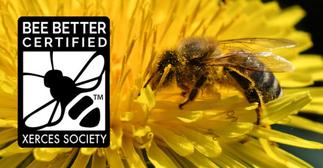
An introduction to the
Bee Better Certified Program
Click on the photo!
Bee Better Certified Program
Click on the photo!
For additional information click on any of the "buzzers" below:
